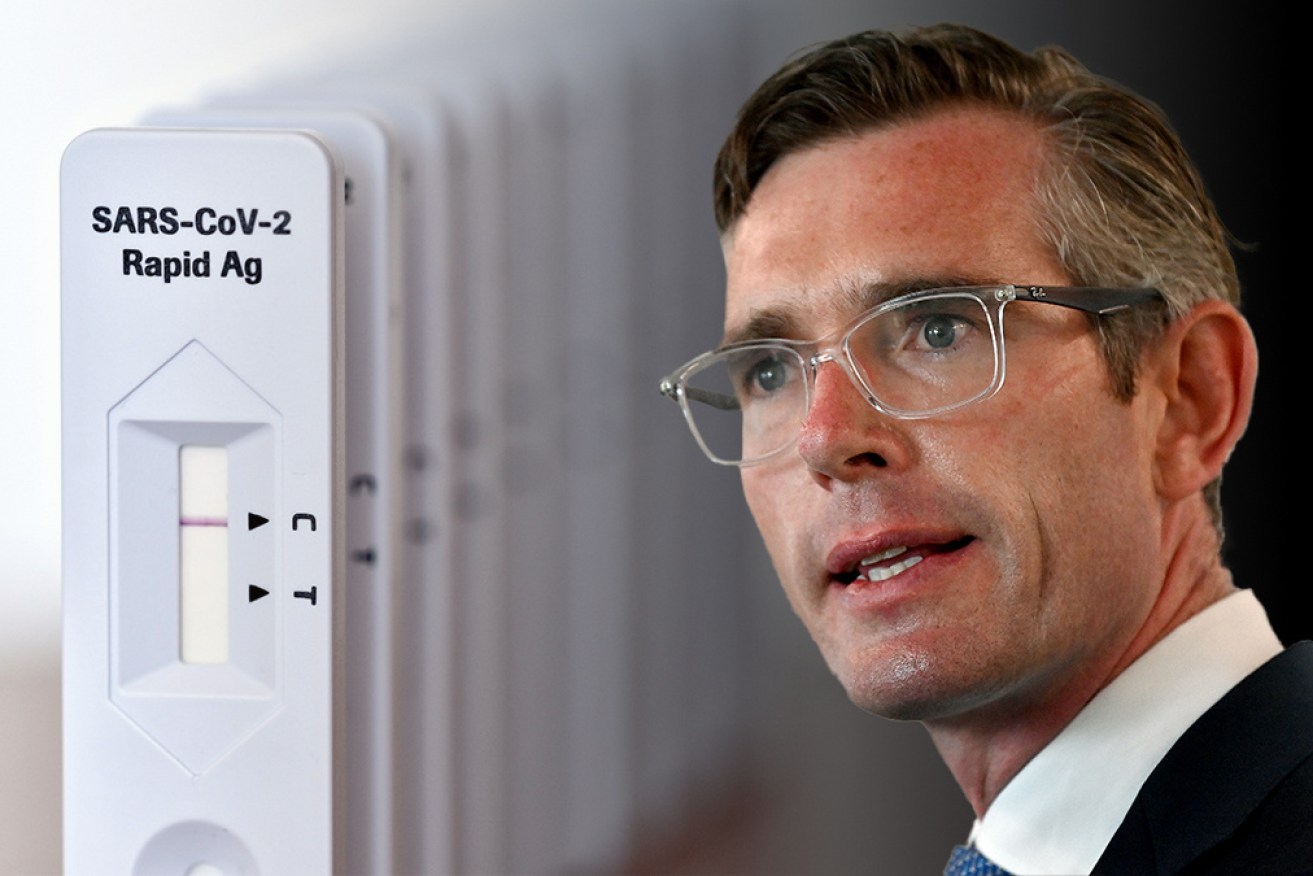NSW to start logging rapid antigen test results, making pandemic payments more accessible


Positive rapid antigen test results will now be recorded in NSW. Photo: TND
New South Wales has become the latest state to collect data for positive rapid antigen tests, and it has changed the way people access pandemic leave disaster payments.
Official COVID-19 case numbers are expected to climb again in the state due to this new data, but the trajectory of the virus will remain the same for now.
Unlike in other states, though, people in NSW who don’t register their positive result could risk a $1000 fine.
“The registration of that test is [now] mandatory,” Premier Dominic Perrottet said on Wednesday.
The new rule is also retroactive, meaning anyone who tested positive with a rapid antigen test this year – including over the past 13 days – has until January 19 to register their result via the Service NSW app or online.
People who test positive in future will have to log their result within 24 hours.
“As at 12.15pm today Service NSW has received 30,704 registrations” NSW Digital Minister Victor Dominello said.
That figure more than doubled by Wednesday evening.
The process does not require users to have a Service NSW account and includes a short questionnaire about symptoms and underlying health conditions.
Although the new system won’t immediately change the course of the virus, it will have a noticeable effect on official data.
“Getting more data on the pandemic, and what’s going on in Australia, is always a good thing,” University of Sydney epidemiologist Professor Alexandra Martiniuk told The New Daily.
“So everybody’s very prepared for this. It’s what was requested and that’s great.”
NSW is following Victoria, Queensland and South Australia in allowing people to register their positive rapid antigen tests (RATs).
The benefits are twofold
Having the government log positive rapid antigen tests means more people will be able to access Pandemic Leave Disaster Payments while isolating.
Previously, only people who had returned a positive PCR test were eligible for the $750 lump sum.

NSW residents can now log their positive RAT result under the ‘COVID-19 Resources’ section of the Service NSW app. Photo: Supplied
But as clinics became swamped over the holiday period, many people opted for RATs instead of waiting hours in line while sick, while those who did wait in line often found themselves turned away.
Now, people who have registered their positive RAT result in all participating states can apply for the payment from the federal government.
In the case of NSW, logging rapid antigen test results will also help health authorities find people who are most at risk of severe disease to provide early care.
“This is not just about the numbers and the registrations through Service NSW. More importantly, this is about ensuring NSW Health is connected to those details, so if you do have any underlying health conditions, NSW Health can provide that support,” Mr Perrottet said.
This, according to Professor Martiniuk, could be one of the biggest benefits of the scheme.
“The Service NSW app and the uploading of test results will assist in people potentially getting some care that they need,” she said.
“So that’s really useful.”
Learn more about the government payments here.
Case numbers to climb
Australians should expect to see an increase in official case numbers in all states where rapid antigen test results are counted, and that will be clear in NSW in the coming days.
Biostatistician Professor Adrian Esterman from the University of South Australia has been closely tracking case numbers around Australia throughout the pandemic.
He said that when Victoria started recording RAT results, the uptake of PCR tests dropped, but overall case numbers climbed by about 20 per cent.
But this still won’t be the full picture.
For one, NSW isn’t logging negative results from RATs, meaning authorities won’t know what percentage of tests are returning positive.
“In the UK, what they do is, on the rapid antigen test packet there’s a QR code, so you simply do the test, scan the code, it takes you straight to the government website, and you put in whether it was positive, negative or void,” Professor Esterman said.
“Why on earth we wouldn’t adopt that here is beyond me.”

Rapid antigen tests are in short supply, meaning authorities still won’t know the true case numbers. Photo: AAP
RATs remain in short supply
“The biggest challenge still is: Who can get a hold of rapid antigen tests?” Professor Martiniuk said.
“So there will still be a lot of people who just never test, so there’s going to be a lot of cases still missing, and one would expect or hypothesise those will be people who may be poorer or not speak English, so we won’t necessarily know the cases perfectly.”
Since mid-December, the tests have been in short supply across the east coast.
Savvy shoppers have used tools like Findarat.com.au to locate shops that still have stock.
Some retailers have started price gouging, even selling individual tests for as much as $50 when they previously cost about $15.
These shortages will affect the data.
“It’s still difficult to interpret because of the lack of ability to actually get hold of one,” Professor Esterman said.
“The whole thing is in a bit of a mess at the moment, but I’m fairly confident that we can interpret the effective reproduction number despite all those major issues.”








